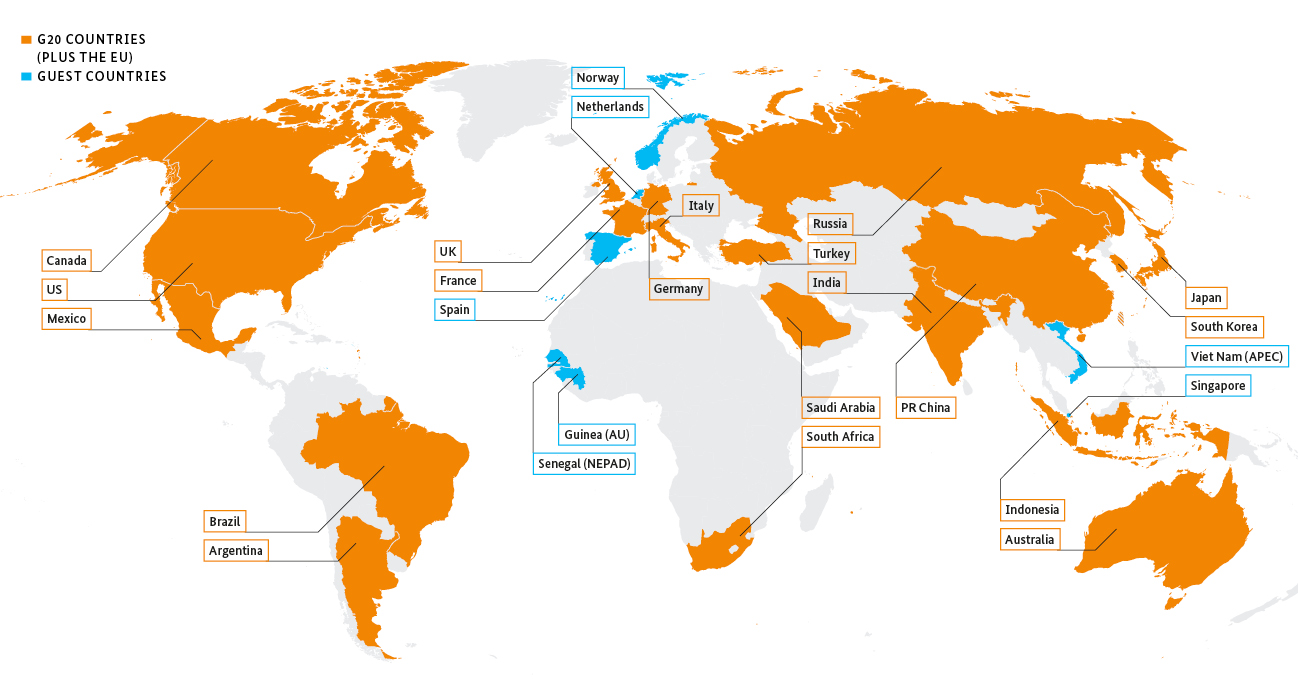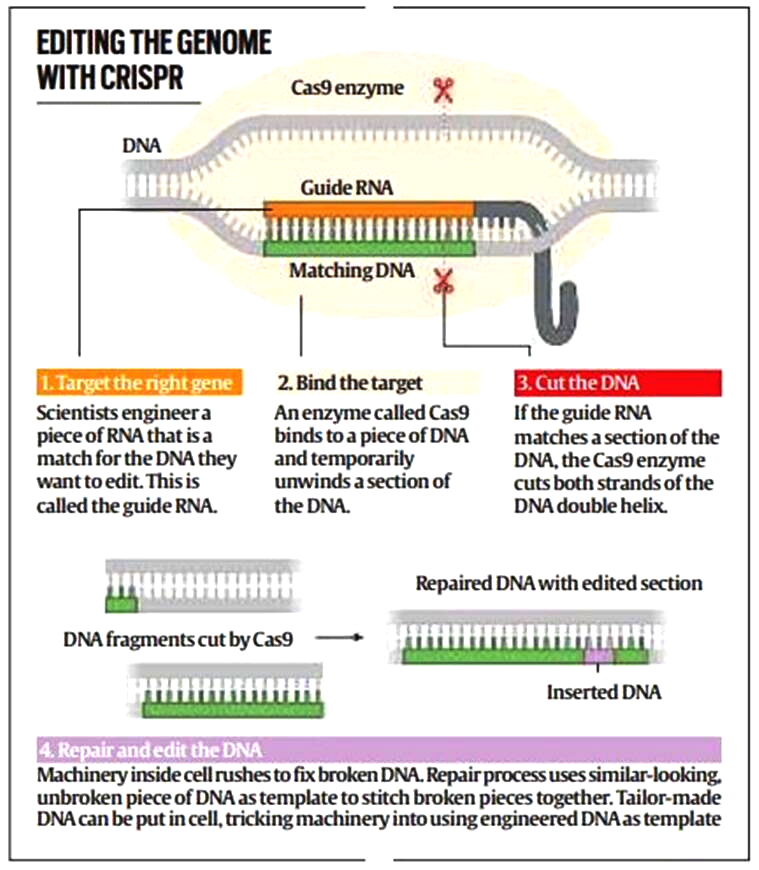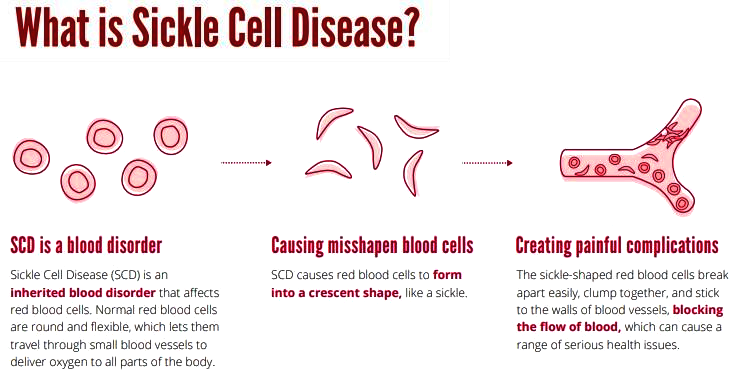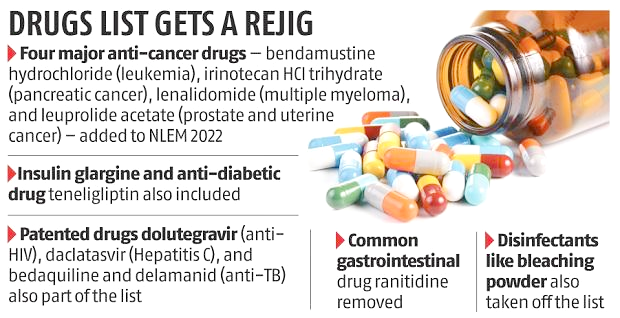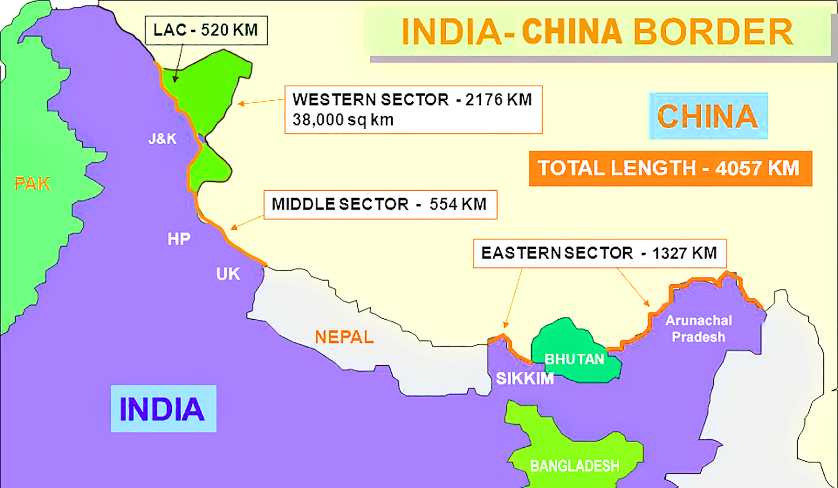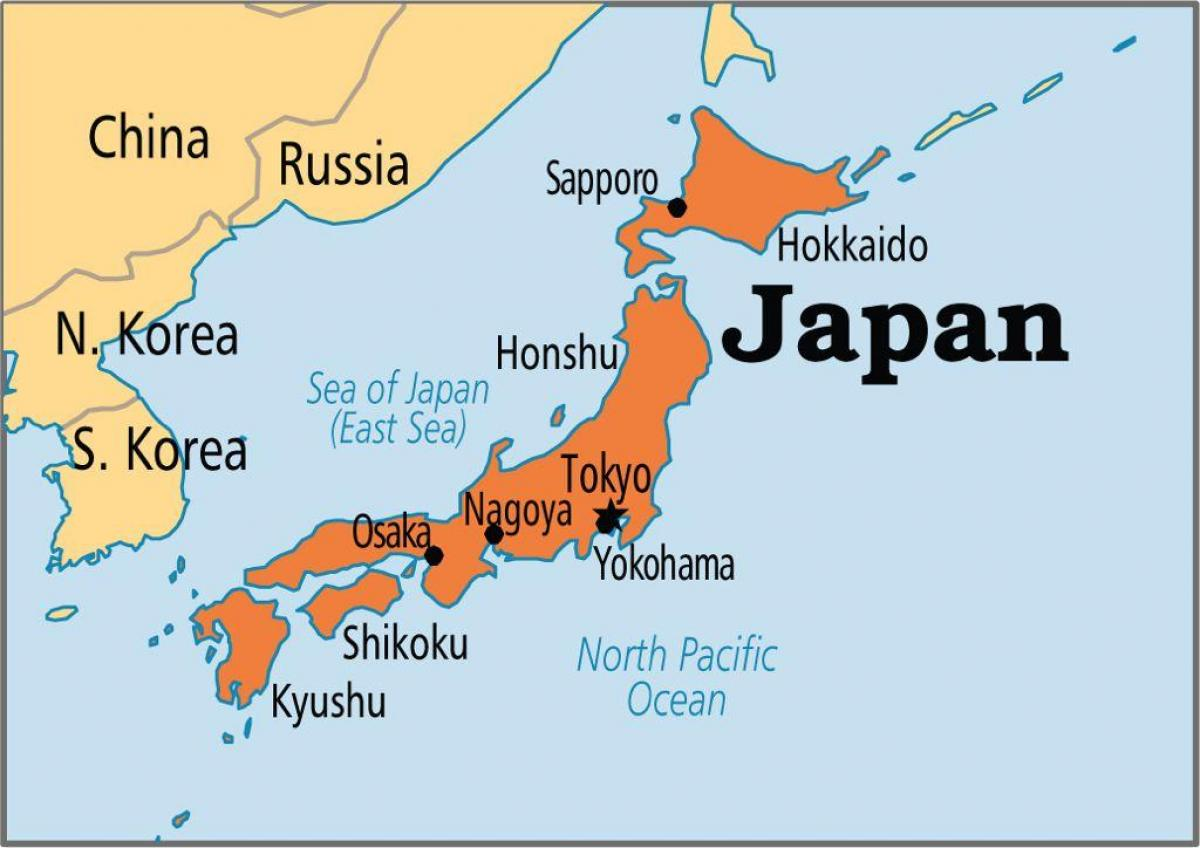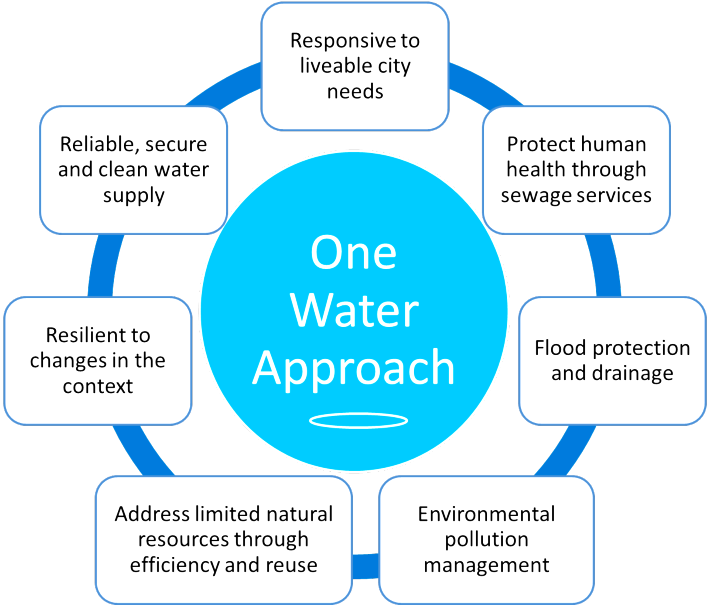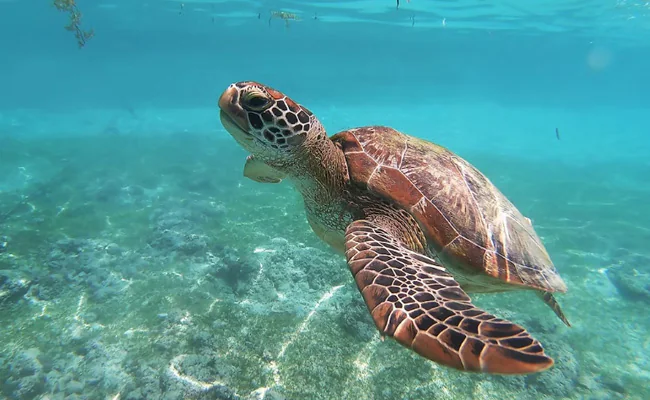India to host G20 Summit in 2023
For Prelims: G20, International Organisation, India and International Groupings
For Mains: India’s foreign policy, Significance of G20 in India’s Foreign Policy, Challenges of global happenings on international groupings
Why in the News?
Recently, the Ministry of External Affairs (MEA) announced that India is hosting the G-20 (Group of 20) leaders’ summit in New Delhi next year 2023.
- The 17th G20 Heads of State and Government Summit will happen in November 2022 in Indonesia, after which India will assume the presidency of G20 from December 2022.
- India is assuming the Presidency of the G20 for one year.
What are the Key Points?
- Guest Countries:
- India, as G20 Presidency, will be inviting Bangladesh, Egypt, Mauritius, Netherlands, Nigeria, Oman, Singapore, Spain and UAE as Guest countries.
- Troika:
- During the Presidency, India, Indonesia and Brazil would form the troika. This would be the first time when the troika would consist of three developing countries and emerging economies, providing them a greater voice.
- Troika refers to the top grouping within the G20 that consists of the current, previous and the upcoming presidencies (Indonesia, India and Brazil).
- During the Presidency, India, Indonesia and Brazil would form the troika. This would be the first time when the troika would consist of three developing countries and emerging economies, providing them a greater voice.
- Key Priorities:
- Inclusive, Equitable and Sustainable Growth,
- LiFE (Lifestyle For Environment),
- Women’s Empowerment,
- Digital public infrastructure and tech-enabled development in areas ranging from health, agriculture and education to commerce,
- Skill-mapping, culture and tourism, climate financing, circular economy, global food security, energy security, green hydrogen, disaster risk reduction and resilience,
- Developmental cooperation, fight against economic crime, and multilateral reforms.
What is the G20?
- About:
- The G20 was formed in 1999 in the backdrop of the financial crisis of the late 1990s that hit East Asia and Southeast Asia in particular.
- It aims to secure global financial stability by involving middle-income countries.
- Together, the G20 countries include 60 % of the world’s population, 80 % of global GDP, and 75 % of global trade.
- Members:
- Argentina, Australia, Brazil, Canada, China, France, Germany, India, Indonesia, Italy, Japan, Republic of Korea, Mexico, Russia, Saudi Arabia, South Africa, Turkey, the United Kingdom, the United States and the EU.
- Spain is invited as a permanent guest.
- Argentina, Australia, Brazil, Canada, China, France, Germany, India, Indonesia, Italy, Japan, Republic of Korea, Mexico, Russia, Saudi Arabia, South Africa, Turkey, the United Kingdom, the United States and the EU.
- Presidency:
- The presidency of the G20 rotates every year among members, and the country holding the presidency, together with the previous and next presidency-holder, forms the ‘Troika’ to ensure continuity of the G20 agenda.
- Italy, Indonesia, and India are the Troika countries right now and Indonesia holds the current Presidency.
- The presidency of the G20 rotates every year among members, and the country holding the presidency, together with the previous and next presidency-holder, forms the ‘Troika’ to ensure continuity of the G20 agenda.
- Mandate:
- The G20 has no permanent secretariat. The agenda and work are coordinated by representatives of the G20 countries, known as ‘Sherpas’, who work together with the finance ministers and governors of the central banks.
- The primary mandate of the grouping is for International Economic cooperation with particular emphasis to prevent future financial crises across the world.
- It plays a significant role in shaping the global economic agenda.
- From 1999-2008 the forum exalted from a grouping of Central bank governors and finance ministers to Heads of states.
UPSC Civil Services Examination, Previous Year Questions (PYQs)
Q. In which one of the following groups are all the four countries members of G20? (2020)
(a) Argentina, Mexico, South Africa and Turkey
(b) Australia, Canada, Malaysia and New Zealand
(c) Brazil, Iran, Saudi Arabia and Vietnam
(d) Indonesia, Japan, Singapore and South Korea
Ans: (a)
CRISPR-Cas9 for Sickle-Cell Anaemia
For Prelims: CRISPR-Cas9, Sickle Cell Anaemia, Gene Editing, Genetic Engineering
For Mains: CRISPR-Cas9 Technology, Applications, Significance and Related Ethical Concerns
Why in News?
India approved a 5-year project to develop Clustered Regularly Interspaced Short Palindromic Repeats (CRISPR) to cure sickle cell anaemia in 2021.
- Sickle cell anaemia is the first disease that is being targeted for CRISPR-based therapy in India.
- The pre-clinical phase (trials on animal subjects) is about to begin.
What is CRISPR Technology?
- About:
- Clustered Regularly Interspaced Short Palindromic Repeats (CRISPR) is a gene editing technology, which replicates natural defence mechanism in bacteria to fight virus attacks, using a special protein called Cas9.
- It usually involves the introduction of a new gene, or suppression of an existing gene, through a process described as genetic engineering.
- CRISPR technology does not involve the introduction of any new gene from the outside.
- CRISPR-Cas9 technology is often described as ‘Genetic Scissors’.
- Its mechanism is often compared to the ‘cut-copy-paste’, or ‘find-replace’ functionalities in common computer programmes.
- A bad stretch in the DNA sequence, which is the cause of disease or disorder, is located, cut, and removed and then replaced with a ‘correct’ sequence.
- The tools used to achieve this are biochemical i.e., specific protein and RNA molecules.
- The technology replicates a natural defence mechanism in some bacteria that uses a similar method to protect itself from virus attacks.
- Mechanism:
- The first task is to identify the particular sequence of genes that is the cause of the trouble.
- Once that is done, an RNA molecule is programmed to locate this sequence on the DNA strand, just like the ‘find’ or ‘search’ function on a computer.
- After this Cas9 is used to break the DNA strand at specific points, and remove the bad sequence.
- A DNA strand, when broken, has a natural tendency to re-attach and heal itself. But if the auto-repair mechanism is allowed to continue, the bad sequence can regrow.
- So, scientists intervene during the auto-repair process by supplying the correct sequence of genetic codes, which attaches to the broken DNA strand.
- It is like cutting out the damaged part of a long zipper, and replacing it with a normally functioning part.
- So, scientists intervene during the auto-repair process by supplying the correct sequence of genetic codes, which attaches to the broken DNA strand.
- The entire process is programmable, and has remarkable efficiency, though the chances of error are not entirely ruled out.
What is the Significance of CRISPR-based Therapeutic Solutions?
- Specific Treatment: CRISPR aids in the disease treatment by correcting the underlying genetic problem. CRISPR-based therapeutic solutions are not in the form of a pill or drug. Instead, some cells of every patient are extracted, the genes are edited in the laboratory, and the corrected genes are then re-injected into the patients.
- What is to be edited, and where, is different in different cases. Therefore, a specific solution needs to be devised for every disease or disorder that is to be corrected.
- The solutions could be specific to particular population or racial groups, since these are also dependent on genes.
- The changes in genetic sequences remain with the individual and are not passed on to the offspring.
- What is to be edited, and where, is different in different cases. Therefore, a specific solution needs to be devised for every disease or disorder that is to be corrected.
- Permanent Cure of Genetic Diseases/Anomalies: A vast number of diseases and disorders are genetic in nature i.e.; they are caused by unwanted changes or mutations in genes.
- These include common blood disorders like sickle cell anaemia, eye diseases including colour blindness, several types of cancer, diabetes, HIV, and liver and heart diseases. Many of these are hereditary as well.
- CRISPR opens up the possibility of finding a permanent cure for many of these diseases.
- Deformities like stunted or slow growth, speech disorders, or inability to stand or walk arise out of abnormalities in gene sequences.
- CRISPR presents a potential treatment for the cure of such abnormalities as well.
What is the Related Ethical Dilemma?
- CRISPR’s power to induce dramatic changes in an individual which can be potentially misused.
- In 2018, a Chinese researcher disclosed that he had CRISPR aids in the disease treatment by correcting the underlying genetic problem.
- This was the first documented case of creating a ‘designer baby’, and it caused widespread concern in the scientific community.
- Preventive interventions to obtain special traits is not something that scientists currently want the technology to be used for.
- Also, because the changes were made in the embryo itself, the new acquired traits were likely to be passed on to future generations.
- Though the technology is fairly accurate, it is not 100% precise, and could induce a few errors as well, making changes in other genes. This has the possibility of being inherited by successive generations.
- In 2018, a Chinese researcher disclosed that he had CRISPR aids in the disease treatment by correcting the underlying genetic problem.
What is Sickle Cell Anaemia?
- About:
- It is an inherited blood disease which is most common among people of African, Arabian and Indian origin.
- It is a group of disorders that affects hemoglobin, the molecule in red blood cells that delivers oxygen to cells throughout the body.
- People with this disease have atypical hemoglobin molecules called hemoglobin S, which can distort red blood cells into a sickle, or crescent shape.
- This blocks blood flow and oxygen from reaching all parts of the body.
- Symptoms:
- It can cause severe pain, referred to as sickle cell crises.
- Over time, people with sickle cell disorders can experience damage to organs including the liver, kidney, lungs, heart and spleen. Death can also result from complications of the disorder.
- Treatment:
- Medication, blood transfusions and rarely a bone-marrow transplant.
UPSC Civil Services Examination, Previous Year Question (PYQ)
Prelims
Q. What is Cas9 protein that is often mentioned in news? (2019)
(a) A molecular scissors used in targeted gene editing
(b) A biosensor used in the accurate detection of pathogens in patients
(c) A gene that makes plants pest-resistant
(d) A herbicidal substance synthesized in genetically modified crops
Ans: (a)
Exp:
- CRISPR-Cas9 is a unique technology that enables geneticists and medical researchers to edit parts of the genome by removing, adding or altering sections of the DNA sequence.
- CRISPR is an acronym for “Clustered Regularly Interspaced Short Palindromic Repeats.”
- Cas9 is basically an enzyme that is used like a pair of scissors to cut two strands of DNA at a specific location to add, remove or repair bits of DNA.
- Hence, option A is the correct answer.
Mains
Q. What are the research and developmental achievements in applied biotechnology? How will these achievements help to uplift the poorer sections of society? (2021)
National List of Essential Medicines (NLEM)
For Prelims: National List of Essential Medicines (NLEM), World Health Organisation (WHO), World Health Assembly (WHA), National Pharmaceuticals Pricing Authority (NPPA).
For Mains: Significance of National List of Essential Medicines (NLEM).
Why in News?
Recently, The Union Health Ministry launched the new National List of Essential Medicines (NLEM), where 384 drugs have been included in this list with addition of 34 drugs, while 26 from the previous list have been dropped.
- As per the World Health Organisation (WHO), Essential Medicines are those that satisfy the priority health care needs of the population.
What is the National List of Essential Medicines (NLEM)?
- About:
- The National List of Essential Medicines (NLEM) is a list released by the Ministry of Health and Family Welfare.
- The medicines listed in the NLEM are sold below a price ceiling fixed by the National Pharmaceutical Pricing Authority (NPPA).
- In India, it was framed on the lines of the Essential Medicines List (EML) released by the WHO.
- The National List of Essential Medicines (NLEM) is a list released by the Ministry of Health and Family Welfare.
- History:
- The Ministry of Health and Family Welfare prepared and released the first National List of Essential Medicines of India in 1996 consisting of 279 medicines. This list was subsequently revised in 2003, 2011, 2015 and 2022.
- Purpose:
- Guide safe and effective treatment of priority disease conditions of a population.
- Promote the rational use of medicines.
- Optimize the available health resources of a country. It can also be a guiding document for:
- State governments to prepare their list of essential medicines
- Procurement and supply of medicines in the public sector.
What are the Criteria for a Medicine to be Included in NLEM?
- Several factors are looked at before including a drug in the NLEM. These are:
- Essentiality: A medicine may be essential considering the population at large and should fit into the definition mentioned earlier.
- Changing disease burden: With time, the disease burden keeps changing in the country. At one point, TB might be more important to tackle. At the next moment, another disease like Covid-19 may become more important. So, the prevalent disease is considered while preparing the list.
- Efficacy and Safety: The medicine must have "unequivocal" evidence of efficacy and wider acceptance based on its safety to be included in the list.
- Cost-Effectiveness: The total price of the treatment must be considered while including the drug in NLEM. Only unit price may not be the best benchmark for this.
- Fixed Dose Combinations (FDCs): The single-dose medicines are considered for inclusion in NLEM. FDCs are only included if they have a proven advantage concerning the therapeutic effect.
- Turnover: High sales turnover alone is not considered a good benchmark for inclusion in the NLEM. Other factors are also required to be essentially considered for it.
When is a Medicine Deleted from NLEM?
- A drug is deleted from the list if it gets banned in India. Also, it is removed if reports of concerns about drug safety emerge.
- If medicine with better efficacy or favourable safety profile and better cost-effectiveness is now available, then it is removed from NLEM.
What is an Essential Medicine List (EML)?
- About:
- The list is made with consideration of disease prevalence, efficacy, safety and comparative cost-effectiveness of the medicines.
- Such medicines should be available in such a way that an individual or community can afford them.
- The WHO EML is updated every two years by the Expert Committee on Selection and Use of Essential Medicines.
- History:
- The first country in the world to compose its EML was Tanzania in 1970. Then in 1975, the World Health Assembly (WHA) requested WHO to assist member states in selecting and procuring essential medicines, assuring good quality at a reasonable cost.
- Subsequently, the first WHO model list of essential medicines was published in the year 1977 which contained 186 medicines.
- It stated that essential medicines were “of utmost importance, basic, indispensable and necessary for the health and needs of the population” and the criteria for selection were based on efficacy, safety, quality and total cost.
UPSC Civil Services Examination Previous Year Question (PYQ)
Q. What do you understand by Fixed Dose Drug Combinations (FDCs)? Discuss their merits and demerits. (2013)
China Objects Indo-US Military Drill Near LAC
For Prelims: India - China Relations, India-China Border Agreements, LAC, LoC, Yudh Abhyas.
For Mains: Issues related to India - China relations and the way forward.
Why in News?
Recently, China opposed the war games between India and the US near the disputed Sino-India border, saying it’s an interference in the bilateral boundary issue.
- While the drill is yet to be officially confirmed, it is anticipated that the two countries will participate in the 18th edition of the “Yudh Abhyas” at Auli in Uttarakhand in October 2022, some 100km from the Line of Actual Control (LAC).
Why Does China Oppose the Military Drill near LAC?
- China says both countries have agreed that no military drill will be held near the LAC, the de facto border between the two countries.
- China cited two agreements signed by India and China in 1993 and 1996, saying the exercise violates both.
- 1993 Agreement on the Maintenance of Peace and Tranquillity along the Line of Actual Control in the India-China Border Areas.
- 1996 Agreement on Confidence-Building Measures in the Military Field Along the Line of Actual Control in the India-China Border Areas.
- A key element of both the 1993 and 1996 agreements is that the two sides would keep their forces in the areas along the LAC to a minimum level. However, the agreements do not define what comprises the minimum level.
- The 1993 and 1996 agreements also mandate that pending a final solution to the boundary question, the two sides shall strictly respect the LAC.
- Use of firearms on the LAC is strictly regulated as per the agreements of 1993, 1996 and 2005.
What is Yudh Abhyas?
- It is the largest running joint military training and defence cooperation endeavor between India and the US.
- The exercise was started in 2004 under the US Army Pacific Partnership Program. The exercise is hosted alternately between both countries.
- The exercise aims at enhancing understanding, cooperation and interoperability between two Armies.
- This will help them in undertaking joint operations at battalion level in mountainous terrain with cold climatic conditions under the ambit of the United Nations.
What is the Point of Contention between two countries?
- The major disagreements are in the western sector.
- After the 1962 War, the Chinese claimed they had withdrawn to 20 km behind the LAC in November 1959.
- In the eastern sector the border coincides in the main with the so-called McMahon Line, and in the western and middle sectors it coincides in the main with the traditional customary line which has consistently been pointed out by China.
- During the Doklam crisis in 2017, China urged India to abide by the “1959 LAC”.
- India rejected the concept of LAC in both 1959 and 1962.
- India’s objection was that the Chinese line “was a disconnected series of points on a map that could be joined up in many ways, the line should omit gains from aggression in 1962 and therefore should be based on the actual position on September 8, 1962 before the Chinese attack, and the vagueness of the Chinese definition left it open for China to continue its creeping attempt to change facts on the ground by military force.
What are the Recent Issues and Developments between India and China?
- Issues:
- May 2020: Chinese and Indian forces clashed at Nathu La, Sikkim (India).
- June 2020: Indian and Chinese armies were engaged in the standoff in Pangong Tso, Galwan Valley, Demchok and Daulat Beg Oldie in eastern Ladakh.
- June 2020: India banned 59 apps originating from China.
- November 2020: India blocked 43 new mobile apps, mostly Chinese.
- The ban has been enforced under Section 69A of the Information Technology Act, 2000.
- Developments:
- February 2021: India and China decided to finally reach an agreement on disengagement at Pangong Lake.
- September 2022: Recently, Indian and Chinese armies have begun to disengage from Patrolling Point-15 in the Gogra-Hot Springs area of Eastern Ladakh, marking a step forward to end the standoff ongoing since May 2020.
What is the Line of Actual Control?
- The LAC is the demarcation that separates Indian-controlled territory from Chinese-controlled territory.
- India considers the LAC to be 3,488 km long, while the Chinese consider it to be only around 2,000 km.
- It is divided into three sectors,
- The eastern sector which spans Arunachal Pradesh and Sikkim.
- The middle sector in Uttarakhand and Himachal Pradesh
- The western sector in Ladakh.
How is the LAC different from the Line of Control with Pakistan?
- The LoC emerged from the 1948 ceasefire line negotiated by the UN after the Kashmir War.
- It was designated as the LoC in 1972, following the Shimla Agreement between the two countries.
- It is delineated on a map signed by Director General of Military Operations (DGMOs) of both armies and has the international sanctity of a legal agreement.
- The LAC, in contrast, is only a concept – it is not agreed upon by the two countries, neither delineated on a map or demarcated on the ground.
Way Forward
- As two big emerging economies, China and India need to pursue development alongside each other, move forward in partnership instead of hindrance, and work together for shared progress rather than erecting walls against each other.
- India and China also need to advance the boundary talks to build up mutual trust and realize peace and tranquility in the border areas.
UPSC Civil Services Examination Previous Year Question (PYQ)
Q. “China is using its economic relations and positive trade surplus as tools to develop potential military power status in Asia”. In the light of this statement, discuss its impact on India as her neighbour. (2017)
Japan & India to Boost Defence Ties
For Prelims: The 2+2 ministerial meeting, Exercise MILAN, Malabar exercise.
For Mains: India-Japan Relationship.
Why in News?
Recently, India & Japan hold the 2+2 ministerial meeting in Tokyo to enhance security and defence cooperation.
What are the Key Highlights of this Meeting?
- Enhanced Defence Cooperation: Both countries are examining all options necessary for national defence including counterstrike capabilities, and will increase their defence budget substantially to strengthen their capabilities.
- As there is a need to tackle increased security threats mostly from neighbouring China.
- Enhancing Maritime Cooperation: There were extensive discussions on ways to enhance maritime cooperation including maritime domain awareness that includes India’s inclusive vision of Security and Growth for All in the Region (SAGAR).
- Global cooperation: Both countries acknowledged that global cooperation is required more than ever to address security challenges.
- Further, here is consensus on both sides that a strong India-Japan relationship is very important for a free, open, rule-based and inclusive Indo-Pacific based upon sovereignty and territorial integrity of nations.
What is 2+2 Dialogue?
- 2+2 Ministerial is the highest-level institutional mechanism between the two countries.
- It is a format of dialogue where the defence/foreign ministers or secretaries meet with their counterparts from another country.
- India has 2+2 dialogues with four key strategic partners: the US, Australia, Japan, and Russia.
How has India’s Relations with Japan been?
- Defence Exercises:
- India and Japan's defence forces organize a series of bilateral exercises namely, JIMEX (naval), SHINYUU Maitri (Air Force), and Dharma Guardian (Army).
- The participation of Japan for the first time in the multilateral exercise MILAN and operationalisation of the Reciprocal Provision of Supply and Services Agreement in March, 2022 are milestones in the progress of defence cooperation.
- Both countries also participate in the Malabar exercise (Naval Exercise) with the USA and Australia.
- Multilateral Groupings:
- Both India and Japan are members of Quad, G20 and G-4.
- They are also member countries of the International Thermonuclear Experimental Reactor (ITER).
- Health-Care:
- In view of the similarities and synergies between the goals and objectives of India's AYUSHMAN Bharat Programme and Japan’s AHWIN, both sides had been consulting with each other to identify projects to build the narrative of AHWIN for AYUSHMAN Bharat.
- Investment and ODA:
- India has been the largest recipient of the Japanese Official Development Assistance (ODA) Loan for the past decades.
- Delhi Metro is one of the most successful examples of Japanese cooperation through the utilization of ODA.
- India’s Western Dedicated Freight Corridor (DFC) project is funded by a soft loan provided by Japan International Cooperation Agency.
- Japan and India had committed to build a High-Speed Railways in India.
- India Japan Nuclear Deal 2016 will help India build the six nuclear reactors in southern India, increasing nuclear energy capacity ten-fold by 2032.
- India has been the largest recipient of the Japanese Official Development Assistance (ODA) Loan for the past decades.
- Economic Relations:
- Japan’s bilateral trade with India totaled US$ 20.57 billion during FY 2021-22.
- Japan’s exports to India were 2.35% of India’s total imports and India’s exports to Japan were 1.46% of India’s total exports. This underlines that there remains a big potential.
- India was the 18th largest trading partner for Japan, and Japan was the 12th largest trading partner for India in 2020.
- Japan’s bilateral trade with India totaled US$ 20.57 billion during FY 2021-22.
- Developments during 14th India-Japan Annual Summit, 2022:
- Sustainable Development Initiative for the North Eastern Region of India:
- It has been launched with an eye on India’s infrastructure development in the Northeast, and includes both ongoing projects and possible future cooperation in connectivity, healthcare, new and renewable energy, as well as an initiative for strengthening bamboo value chain.
- India-Japan Digital Partnership:
- On cyber security, the leaders discussed the “India-Japan Digital Partnership” with a view to enhancing the digital economy through the promotion of joint projects in the area of IoT (Internet of Things), AI (Artificial Intelligence) and other emerging technologies.
- Japan is looking forward to attracting more highly skilled Indian IT professionals to contribute to the Japanese ICT sector.
- Clean Energy Partnership:
- It was launched for cooperation in areas such as electric vehicles, storage systems including batteries, electric vehicle charging infrastructure, development of solar energy, hydrogen, ammonia, etc.
- The objective is to encourage manufacturing in India, creation of resilient and trustworthy supply chains in these areas as well as foster collaboration in R&D (Research and Development).
- Sustainable Development Initiative for the North Eastern Region of India:
UPSC Civil Services Examination Previous Year Question (PYQ)
Prelims
Q. A present group of nations known as G-8 started first as G-7. Which one among the following was not one of them? (2009)
(a) Canada
(b) Italy
(c) Japan
(d) Russia
Ans: (d)
Exp:
- G-8, an inter-governmental political forum, formed in 1997 by addition of Russia.
- The forum originated with 1975 summit hosted by France that brought together representatives of six governments – France, Germany, Italy, Japan, the United Kingdom, and the United States, thus leading to the name Group of Six or G-6. The summit came to be known as the Group of Seven, or G-7, in 1976 with the addition of Canada. Russia was added to the political forum from 1997, after which it came to be known as the G-8.
- G-8 was again reformatted as G-7 from 2014. In 2014, Russia was suspended from G-8 post-annexation of Crimea, reverting the forum’s name as G-7. In 2017, Russia announced its permanent withdrawal from the G-8. Therefore, option (d) is the correct answer.
One Water Approach
For Prelims: Grey Infrastructure, Green Infrastructure, Flood Protection, Aquifer Recharge, Integrated water resources management.
For Mains: One water Approach and why id needed.
Why in News?
The United Nations has estimated that by the year 2050, four billion people will be seriously affected by water shortages, pushing the One Water approach towards all sources of water.
What is the One Water approach?
- About:
- One Water Approach, also referred to as Integrated Water Resources Management (IWRM), is the recognition that all water has value, regardless of its source.
- It includes managing that source in an integrated, inclusive and sustainable manner by including the community, business leaders, industries, farmers, conservationists, policymakers, academics and others for ecological and economic benefits.
- It is an “integrated planning and implementation approach to managing finite water resources for long-term resilience and reliability meeting both community and ecosystem needs.
- One Water is the future of the water industry when the barriers conventionally separating wastewater, stormwater, drinking water, groundwater and the reuse and re-utilisation are broken down, many benefits realised.
- One Water Approach, also referred to as Integrated Water Resources Management (IWRM), is the recognition that all water has value, regardless of its source.
- Characteristics:
- All Water has Value: The mindset that all water has value — from the water resources in our ecosystems to our drinking water, wastewater and stormwater.
- A Multi-faceted Approach: Our water-related investments should provide economic, environmental, and societal returns.
- Utilising Watershed-Scale Thinking and Action: It should respect and respond to the natural ecosystem, geology, and hydrology of an area.
- Partnerships and Inclusion: Real progress and achievements will only be made when all stakeholders come forward and together will take a decision.
- Objectives:
Why is the One Water Approach Needed?
- Differences in regional water availability, pricing and affordability, the seasonal and inter-annual variation in supply, water quality and quantity, and unreliability of the resource poses great challenges.
- Aged infrastructure, supply-centric management, polluted waterbodies, agricultural and industrial expansion following changes in consumption and production patterns, a changing climate and disproportionate distribution of the water also push for new water techniques.
- At the global level, 31 countries are already facing a shortage of water and by 2025, there will be 48 countries facing serious water shortages.
- Recognising, measuring and expressing water’s worth and incorporating that into decision-making is still a challenge, apart from the water scarcity.
How is IWRM Superior to Conventional Water Management?
- In the conventional water management approach, drinking water, wastewater and stormwater are managed separately, whereas in ‘One Water’, all the water systems, regardless of its source, are connected intentionally and managed meticulously for water, energy and resources.
- Water is recycled and reused several times in IWRM, in contrast to a one-way route from supply to use, treatment and disposal.
- Stormwater is utilised as a valuable resource to fight against water scarcity, recharge groundwater and support natural vegetation.
- The water system includes green infrastructures and a mix of grey and green infrastructure that form a hybrid system as compared to grey infrastructure in conventional water management.
- Grey infrastructure refers to structures such as dams, seawalls, roads, pipes or water treatment plants.
- Green infrastructure refers to natural systems including forests, floodplains, wetlands and soils that provide additional benefits for human well-being, such as flood protection and climate regulation.
- Active collaborations with industry, agencies, policymakers, business leaders and various stakeholders is a regular practice in the ‘One Water’ approach, whereas collaboration is need-based in conventional water management systems.
Way Forward
- Failure to value water in all its forms is considered a prime cause of the mismanagement of water, according to the UN World Water Development Report 2021.
- Therefore, shifting the attention from a single-minded and linear water management to a multi-dimensional integrated water management approach, that is, the ‘One Water’ approach, for a comprehensive, resilient and sustainable management of water resources.
UPSC Civil Services Examination Previous Year Question (PYQ)
Prelims
Q. What are the benefits of implementing the ‘Integrated Watershed Development Programme’? (2014)
- Prevention of soil runoff
- Linking the country’s perennial rivers with seasonal rivers
- Rainwater harvesting and recharge of groundwater table
- Regeneration of natural vegetation
Select the correct answer using the code given below:
(a) 1 and 2 only
(b) 2, 3 and 4 only
(c) 1, 3 and 4 only
(d) 1, 2, 3 and 4
Ans: (c)
Exp:
- The Integrated Watershed Development Programme (IWDP) is implemented by the Department of Land Resources of Ministry of Rural Development.
- The main objective of IWDP is to restore ecological balance by harnessing, conserving and developing degraded natural resources such as soil, vegetative cover and water. Statements 1, 3 and 4 are describing ways to conserve and develop soil, water and vegetative crop and are included in IWDP.
- Watershed development refers to the conservation, regeneration and the judicious use of all the resources – natural (like land, water, plants, animals) and human – within the watershed area. Hence, 1, 3 and 4 are correct.
- However, the linking of the country’s perennial with seasonal rivers is not done under the watershed development programme. Hence, 2 is not correct.
- Therefore, option (c) is the correct answer.
Mains
Q. In what way micro-watershed development projects help in water conservation in drought-prone and semi-arid regions of India? (2016)
Hindi Diwas
Why in News?
On the occasion of Hindi Diwas, Prime Minister of India has said that the Hindi language has brought India special honour globally and its simplicity and sensitivity always attracts people.
What is the History behind Hindi Diwas?
- Hindi Diwas or the National Hindi Day is celebrated every year in India on September 14 to mark the day of adoption of Hindi as the official language by the Constituent Assembly of India in 1949.
- The decision of using Hindi as an official language of India was legalised by the Constitution of India on January 26, 1950. India's first prime minister Jawaharlal Nehru decided to celebrate Hindi Diwas on this day.
- Hindi is also an eighth schedule language.
- Hindi is not a classical language.
- Article 351 pertains to the ‘Directive for development of the Hindi language’.
What are the Government Initiatives to Promote Hindi?
- The Central Hindi Directorate was established in 1960 by the Government of India under the Ministry of Education to promote and propagate Hindi.
- Indian Council for Cultural Relations (ICCR) has established ‘Hindi Chairs’ in various foreign universities/institutions abroad to promote Hindi language in foreign countries.
- LILA-Rajbhasha (Learn Indian Languages through Artificial Intelligence) is a multimedia based intelligent self-tutoring application for learning Hindi.
- E-Saral Hindi Vakya Kosh and E-Mahashabdkosh Mobile App, both initiatives of the Department of Official Language, aim to harness information technology for the growth of Hindi.
- Rajbhasha Gaurav Puraskar and Rajbhasha Kirti Puraskar recognise contributions to Hindi.
Hindi Language
- Hindi is the fourth most spoken language in the world, and is written in Devanagari script. The language got its name from the Persian word 'Hind' - meaning 'land of the Indus River', and is a descendant of Sanskrit.
- Turk invaders in the early 11th century named the language of the region Hindi, 'language of the land of the Indus River'.
- It is the official language of India, English being the other official language.
- Hindi is also spoken in some countries outside India, such as in Mauritius, Fiji, Suriname, Guyana, Trinidad & Tobago and Nepal.
- Hindi in its present form emerged through different stages, during which it was known by other names. The earliest form of old Hindi was Apabhramsa. In 400 AD Kalidas wrote a romantic play in Apabhramsa called Vikramorvashiyam.
- The modern Devanagari script came into existence in the 11th century.
Sea Turtle Poaching
Why in News?
According to a new study, more than 1.1 million sea turtles have been illegally killed and, in some cases, trafficked from 1990 to 2020.
- The sea turtle species that faced the most exploitation in the 30-year-period were Green (56%) and Hawksbill Sea Turtles (39%).
What are the Key Highlights of the Study?
- Marginal Decline in Poaching: There has been a decline of 28% in the poaching of marine creatures, with over 44,000 turtles targeted annually over the last decade.
- Exploitation: The reptiles faced exploitation in 65 countries/territories and 44 marine turtle regional management units (RMU) in the world despite various protection laws.
- Illegal Trade of Species: Southeast Asia and Madagascar were major hotspots for illegal sea turtle trade, particularly for the critically endangered Hawksbills.
- Vietnam was the most common country of origin for illegal sea turtle trafficking, while China and Japan served as destinations for nearly all trafficked sea turtle products.
- They are slaughtered for their eggs, meat, skin, and shell and they also face habitat destruction and accidental capture or bycatch in fishing gear.
- Effects of Climate change: The Climate change has an impact on turtle nesting sites — it alters sand temperatures, which affects the sex of hatchlings.
- Because incubation temperature of turtle eggs determines the animal’s sex, a warmer nest results in more females. Increasing temperatures in Queensland’s north, (Australia), linked to climate change, have led to virtually no male Green Sea turtles being born.
- Initiatives:
- Global: In 2017, residents in eastern Indonesia’s Maluku Province harvested up to 75% of leatherback turtle eggs laid on one turtle nesting beach.
- Education and community outreach done by organisations like the non-governmental organisation World Wide Fund has helped in reducing turtle egg harvesting by 10%.
- Indian: There are plans to tag 30,000 Olive Ridley turtles in Odisha, it will help scientists study them and draft conservation plans.
- Global: In 2017, residents in eastern Indonesia’s Maluku Province harvested up to 75% of leatherback turtle eggs laid on one turtle nesting beach.
What do We Need to Know about Sea Turtles?
- About:
- Sea turtles are marine reptiles with streamlined bodies and large flippers that are well-adapted to life in the ocean.
- The sea turtle family includes the Hawksbill, Loggerhead, Leatherback, Green and Olive ridley turtle.
- These five species are found worldwide, mainly in tropical and subtropical waters.
- Other than the five species, there are two more types of sea turtles that have restricted ranges.
- Kemp’s Ridley is found mainly in the Gulf of Mexico and the Flatback Turtle around northern Australia and southern Papua New Guinea.
- Conservation Status:
- The International Union for Conservation of Nature (IUCN) Status:
- Flatback Turtle: Data Deficient
- Green Turtle: Endangered
- Hawksbill Turtle: Critically Endangered
- Kemp’s Ridley: Critically Endangered
- Loggerhead Turtle: Vulnerable
- Olive Ridley: Vulnerable
- Leatherback Turtle: Vulnerable
- The Convention on International Trade in Endangered Species of Wild Fauna and Flora (CITES) status:
- All seven species of sea turtles are currently listed as Appendix- I under CITES.
- The International Union for Conservation of Nature (IUCN) Status:
UPSC Civil Services Examination Previous Year Question (PYQ)
Prelims
Q. Consider the following statements: (2019)
- Some species of turtles are herbivores.
- Some species of fish are herbivores.
- Some species of marine mammals are herbivores.
- Some species of snakes are viviparous.
Which of the statements given above are correct?
(a) 1 and 3 only
(b) 2, 3 and 4 only
(c) 2 and 4 only
(d) 1, 2, 3 and 4
Ans: (d)
Exp:
- Green sea turtles are adapted to the mostly vegetarian diet of sea grasses and algae. As adults, these are the only predominantly herbivorous sea turtles, although they are carnivorous from hatching until juvenile size. Hence, statement 1 is correct.
- Surgeonfish and parrotfish are two species of fish often seen feeding on reef algae. Hence, statement 2 is correct.
- Manatees, sometimes called sea cows, are large mammals that live in the warm sea waters. They live in shallow coastal areas and feed on sea vegetation. Hence, statement 3 is correct.
- Snakes that are viviparous nourish their young ones through a placenta and yolk sac. Boa constrictors and green anacondas are two examples of viviparous snakes. Hence, statement 4 is correct. Therefore, option (d) is the correct answer

